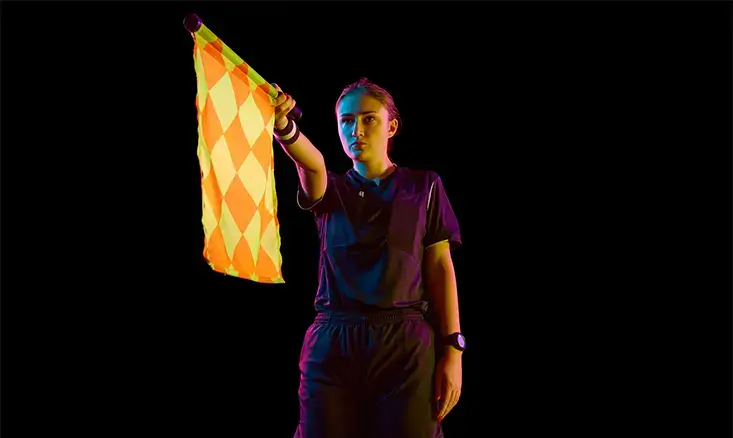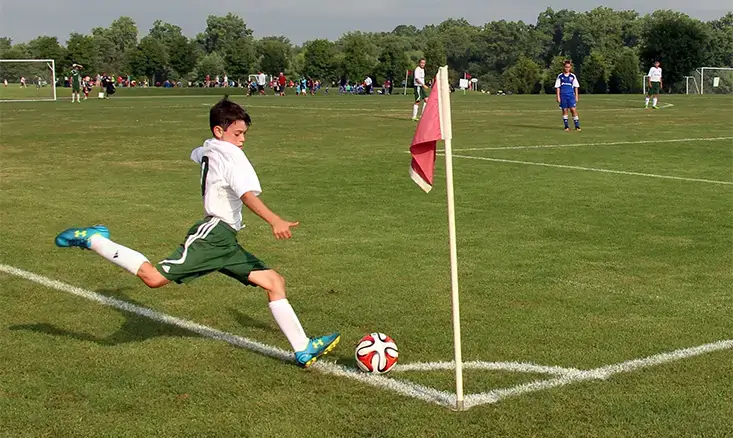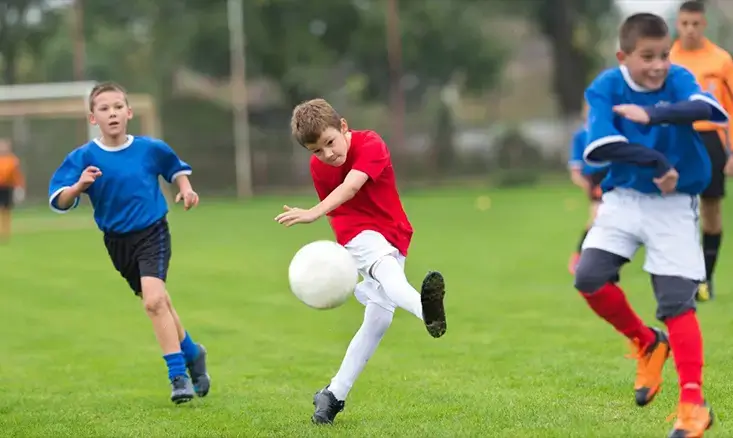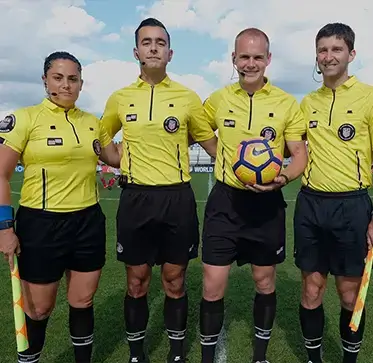CRFC BLOGS
LATEST BLOGS & NEWSLETTERS
Detailed Guide to the Offside Rule for Professional Referee Training
The offside rule in soccer (Law 11) is one of the most challenging aspects of refereeing, requiring precise judgment and deep understanding. This detailed guide provides a comprehensive breakdown of all scenarios outlined in the law, crucial for referees in training and professional practice.
Offside Position
Definition
A player is in an offside position if he is in the opponent’s half of the field and any part of his head, body, or feet is nearer to the opponent’s goal line than both the ball and the second-last opponent. The arms and hands are excluded from this assessment.
Exceptions
The player is not offside if level with the second-last opponent or the last two opponents.
Offside Offense
A player in an offside position at the moment the ball is played by a teammate becomes penalized only when becoming actively involved by:
1. Interfering with Play
Playing or touching the ball.
2. Interfering with an Opponent
Obstructing an opponent’s line of vision, challenging for the ball, or clearly impacting an opponent’s ability to play the ball.
3. Gaining an Advantage
Playing the ball after it has rebounded off the goalpost, crossbar, an official, or an opponent, or after a deliberate save by any opponent.

No Offense
Offside rules do not apply if the player receives the ball directly from a goal kick, a throw-in, or a corner kick.
Offenses and Sanctions
Offside offenses result in an indirect free kick from where the offense occurred, even in the player’s half.
Detailed Scenario Analysis
Direct from Set Pieces
Goal Kick
A goalkeeper’s goal kick directly reaches a teammate in an advanced position. Decision: No offside offense; the goal is valid.
Throw-In
A player receives the ball directly from a teammate’s throw-in while in an advanced position. Decision: No offside offense; play continues.
Corner Kick
A player receives the ball directly from a corner and passes to another player who scores. Decision: No offside offense; the goal is awarded.

Involvement After Rebounds and Deflections
Rebound from Crossbar
A forward in an offside position scores after the ball rebounds from the crossbar. Decision: Indirect free kick to the defending team for offside, as the player gained an advantage.
Deflection from an Opponent
The ball deflects off a defender to an attacker in an offside position who scores. Decision: Indirect free kick for offside, as the attacker gained an advantage.

Interference with Play
Line of Vision
An offside player obstructs the goalkeeper’s view during a shot. Decision: Indirect free kick for offside.
Challenging for the Ball
An offside player challenges an opponent for the ball. Decision: Indirect free kick for offside.
Playing the Ball Close to an Opponent
An offside player attempts to play a ball close to an opponent, impacting their ability to play. Decision: Indirect free kick for offside.
Deliberate Play by Opponents
Deliberate Kick by a Defender
A defender kicks the ball to an opponent in an offside position. Decision: Play continues; no offside offense as the ball was deliberately played by the defender.
Goalkeeper’s Save
A shot is saved by the goalkeeper and rebounds to an offside attacker who scores. Decision: Indirect free kick to the defending team as the forward gained an advantage from their position.
Gaining Advantage from Offside Position
Playing the Ball After a Save
An offside player scores after the goalkeeper makes a save. Decision: Indirect free kick for offside.
Deliberate Kick by a Defender
An offside player scores after the ball hits a post and comes to them. Decision: Indirect free kick for offside.
Miscellaneous Situations
Active Involvement After Foul
A foul occurs against a team whose player in an offside position then plays the ball. Decision: Indirect free kick for the initial offside.
Intercepted Pass
A defender’s pass is intercepted by an offside opponent. Decision: Play continues if the defender deliberately played the ball, except if it was a save.

Conclusion
Offside is a complex rule that even professionals struggle with. Video assistance has not even been able to solve the offside controversy at the highest levels of soccer. Understanding the offside rule in soccer is a critical aspect for players, fans, and referees.
FAQs
What is the offside rule in soccer?
The offside rule in soccer states that a player is offside if they are nearer to the opponent’s goal line than both the ball and the second-last opponent when the ball is played to them, except during a goal kick, corner kick, or throw-in.
How is the offside rule determined in soccer?
A player is determined to be offside if any part of their head, body, or feet is in the opponent’s half of the field and closer to the opponent’s goal line than both the ball and the second-last opponent, at the moment the ball is played to them by a teammate.
What happens if a soccer player is offside?
If a player is in an offside position and becomes actively involved in the play by interfering with the play, an opponent, or gaining an advantage from being in that position, the referee awards an indirect free kick to the opposing team from where the offense occurred.
Does the offside rule apply to throw-ins in soccer?
No, the offside rule does not apply when a player receives the ball directly from a throw-in. The player can be in an advanced position without being penalized for offside.
How does the offside rule work with goalkeepers in soccer?
A player cannot be offside from a goalkeeper’s goal kick. However, if a player receives a ball from a goalkeeper’s save while in an offside position and then plays the ball, it results in an offside offense, and an indirect free kick is awarded to the opposing team.

Did you find this useful?

LATEST BLOGS
GET IN TOUCH WITH US

